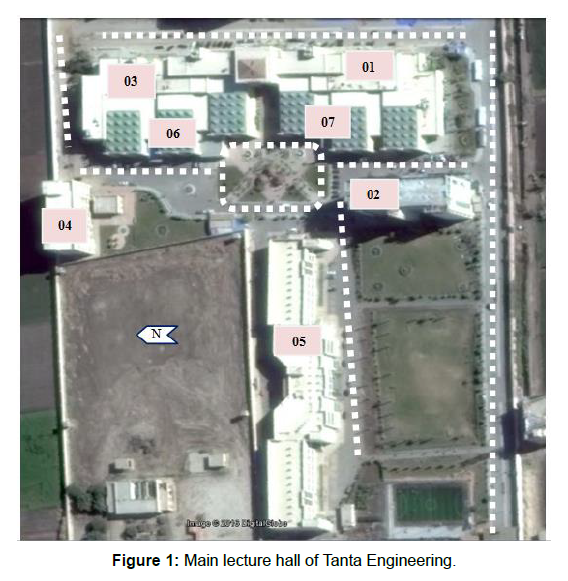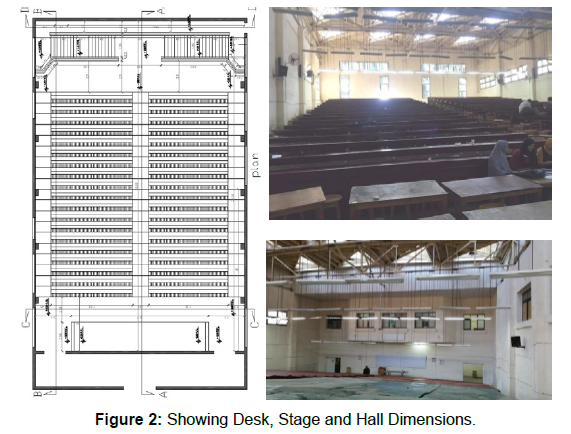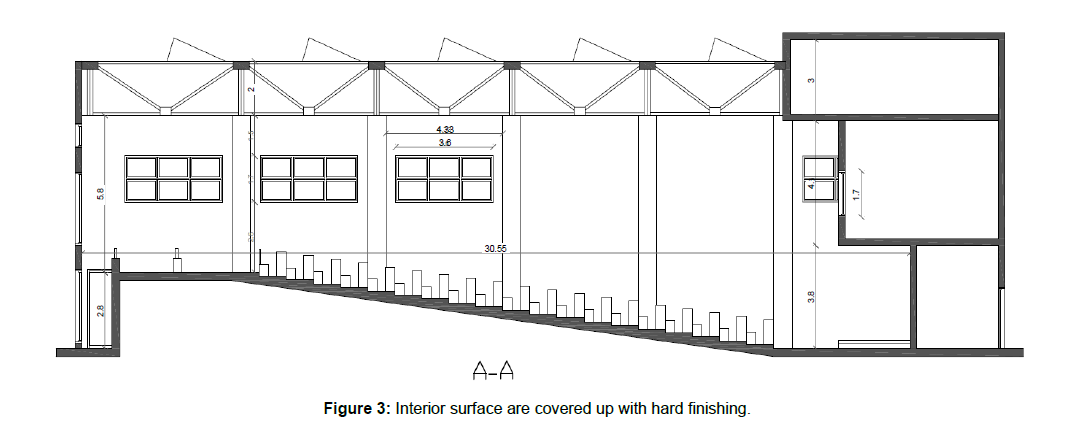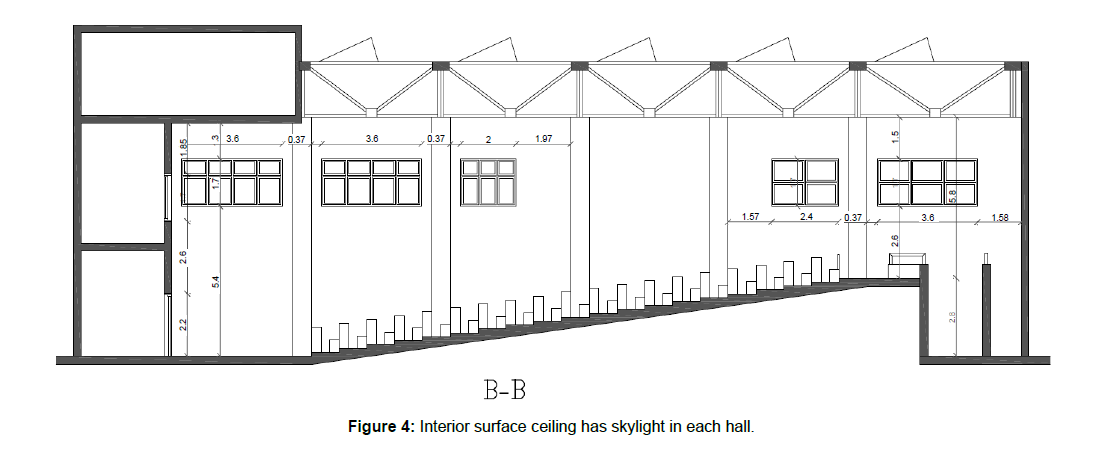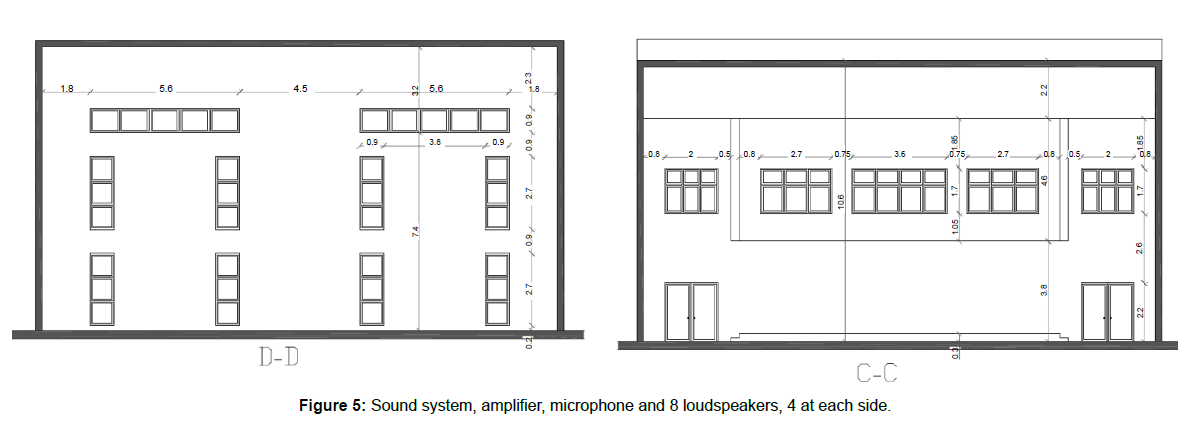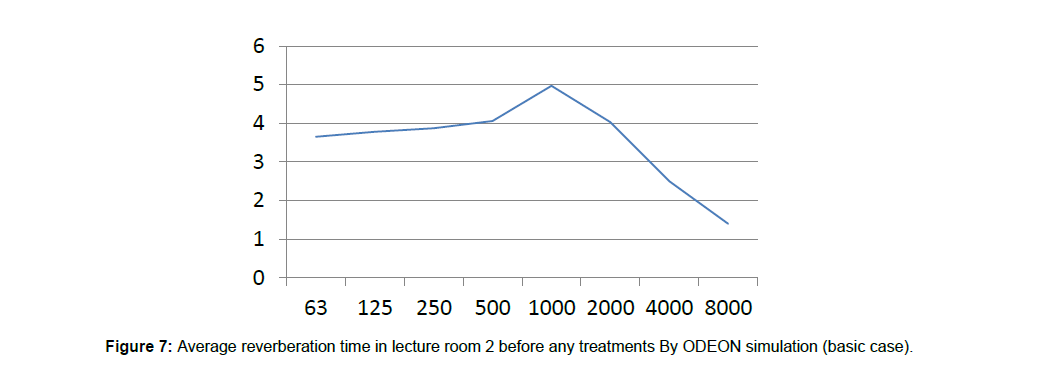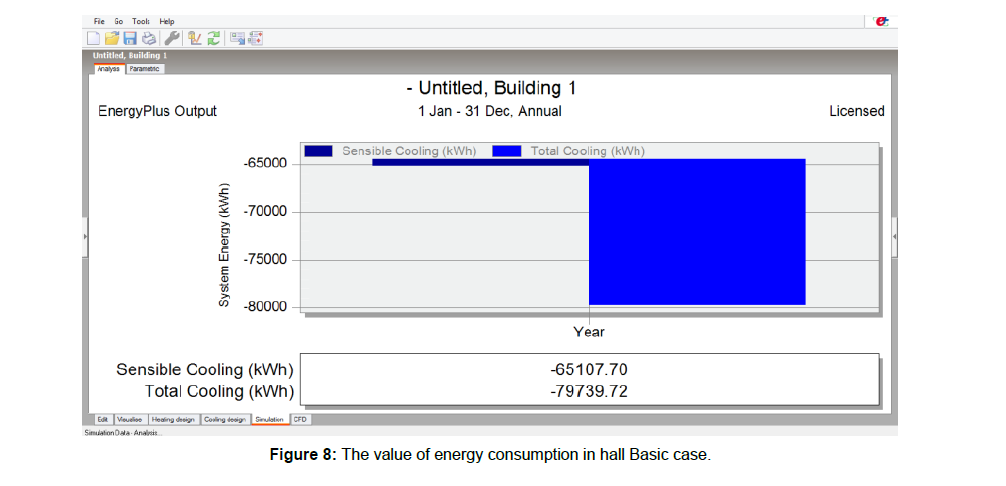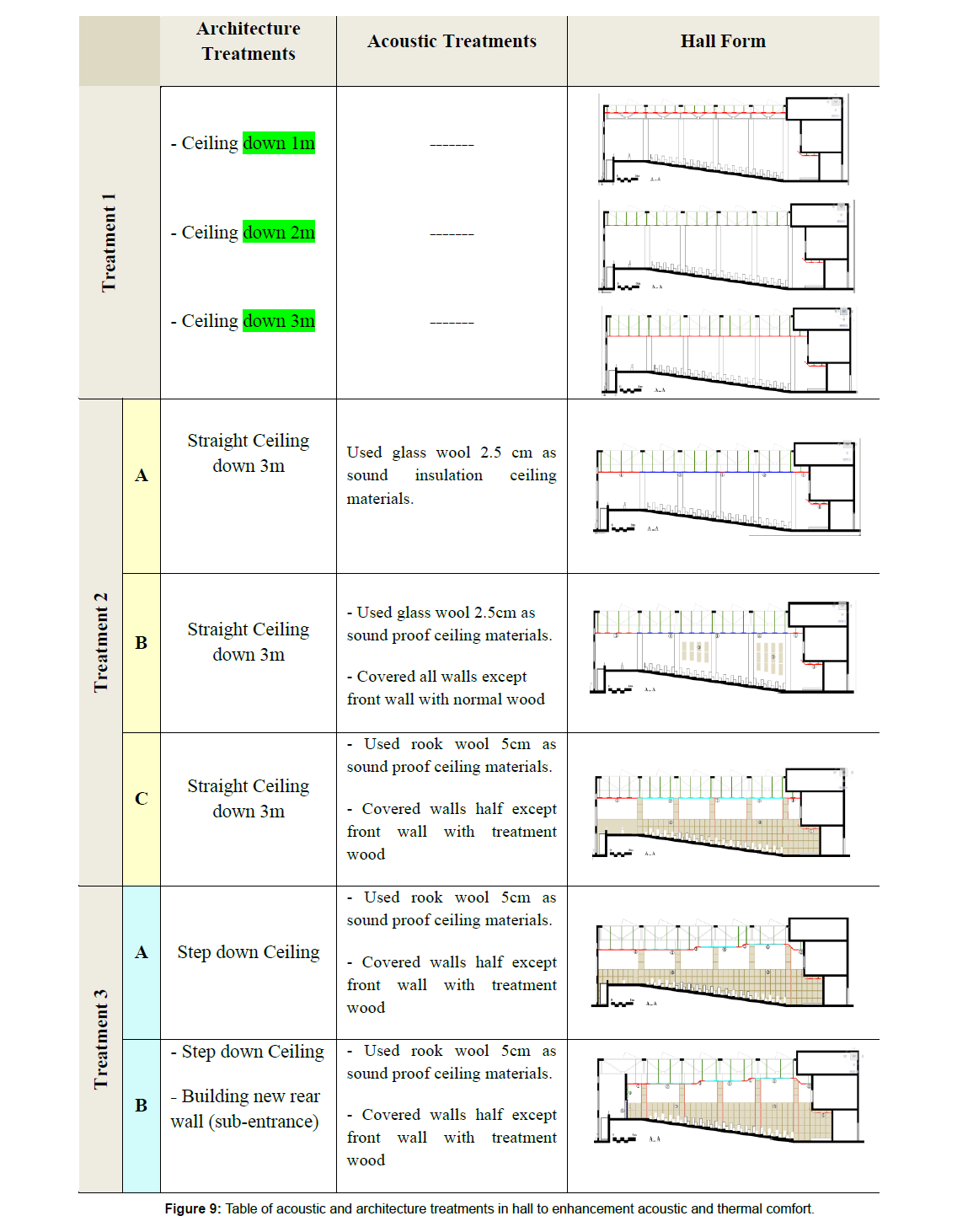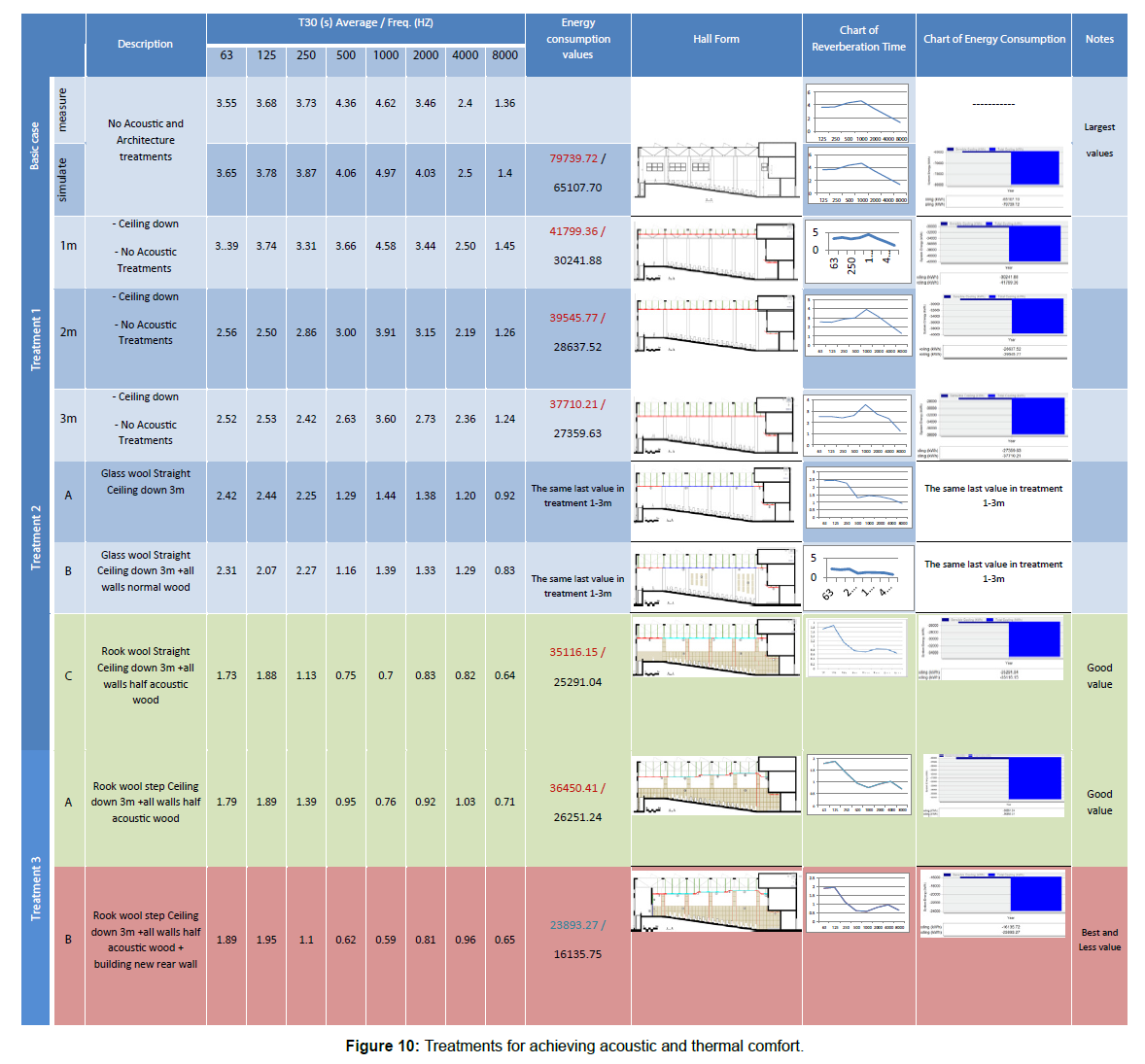Enhancement of Acoustical Performance in Universities' Educational Spaces
Received: 08-Nov-2018 / Accepted Date: 04-Dec-2018 / Published Date: 11-Dec-2018 DOI: 10.4172/2168-9717.1000223
Abstract
Acoustic and thermal performance greatly affect in lecture halls as, acoustic, architecture and thermal treatments play an important role to enhance acoustic and thermal performance in space and therefore increasing sentiment of acoustic and thermal comfort in space. This research get down to the role of acoustic, architecture and thermal treatments to enhance acoustic and thermal performance of internal acoustic and thermal environment for main lecture hall of Tanta engineering whereas, the hall suffers great acoustic and thermal problems, all because of several reasons, most important it, sky light of ceiling, integration work done between acoustic and thermal treatments to achieve best acoustic and thermal performance and using ODEON software to evaluate suggested treatments acoustically and selection the best then evaluate it by DESIGN BUILDER software to calculate the range of energy consumption reduce in hall after these suggested treatments. It helped to enhance acoustic and thermal performance level in hall and increasing sentiment of acoustic and thermal comfort in hall. RT value of lecture hall reduce from RT=3.5 Hz to RT=0.95 Hz and the range of energy consumption reduce in hall after these treatments 70%.
Keywords: Acoustic performance; Acoustic comfort; Thermal comfort; Energy consumption; Reverberation time; Lecture halls; ODEON
Introduction
Acoustic comfort and thermal comfort are basic substrates in lectures halls design [1-3]. Acoustics performance plays an important role in internal environment comfort of space users, especially the spaces that need to good speech and listen as educational spaces in the university buildings [4-8]. Expert experiences in acoustics field show that one third of the students lose about 33% of the current speech in educational space [9-12]. Speech intelligibility is the most important determinant for quality acoustic performance in speech halls [13-15]; many factors affect the speech intelligibility in room as:
• Level of speech in hall
• Distance from speaker
• Directivity of Sound Sources
• Sound Reflections in Room
• Reverberation Time
• Space shape
• Dimensions space
• Internal surface
• Internal finishing
• Acoustic treatments
• Sound absorption and insulation
• Noise
While thermal performance is achieved through a good study of thermal space scarcity, extent of external climate impact on space, and extent of space scarcity to provides internal energy consumption.
In this sense there are many ways to evaluate the space acoustically and thermally, whether these methods by using laboratory measuring equipment and using simulation software, in this study, field measurements were made in one lecture hall and used Simulator program ODEON to evaluate the hall acoustically and calibrate the program by Comparison program results with field measurements [16- 18]. Used “DESIGN BUILDER” to evaluate the saving range of energy consumption in hall.
Main lecture hall of Tanta engineering, it located in ground floor of college building (Workshop building), next to workshops halls and classrooms that depend on lecture hall in ventilation [19-21] as in Figure 1.
Where;
1. Preparatory Building, Department of Electrical powers and Administration
2. Architecture Department and Administration
3. Library, Mechanical Power Department, Math and Physics Department
4. Building and Construction Building
5. Civil Department
6. Workshops
7. Lecture hall 1 and 2 (Case study)
Table 1 show the description of lecture hall 2.
| Dimensions | ||||
|---|---|---|---|---|
| L (m) | W (m) | H (m) | Area (m²) | Volume (m³) |
| 29.7 | 19.3 | 10.6 | 573.2 | 6076 |
Table 1: Table description of Lecture hall 2.
Desks: 19 wooden row, with 1 m (W), 1 m (H), 10 cm the row higher from row previous.
Stage: Concrete, 2.65 m (W), 13.10 (L), the distance to first row is 2.35 m.
Hall: Divided into 6 modules, width of each about 5 m.
Interior surface: Covered up with hard finishing, ceiling has skylight in each hall.
Sound system, amplifier, microphone and 8 loudspeakers, 4 at each side. All we can see in Figures 2-5.
Acoustic and thermal performance of the environment impacts the outcome of learning process, from hall 2 acoustic study; there are many acoustics problems in it whereas internal acoustic environment inappropriate for education process and background noise of hall Larger than the limit, has negative effect on acoustic performance in hall, also range of energy consumption in hall in basic case is very high, on assumption the hall is air conditioned, all because of several reasons, most important it, sky light of ceiling, so suggested some acoustic and architecture treatments to solve these problems and achieve acoustic and thermal comfort for hall users [22-24]. These suggested treatments depended on replace the main ceiling with acoustically treated fallen ceiling and wall binding with acoustically treated materials [25].
Methodology
• Survey on acoustic performance in lecture halls, the factors affected on it, and the ways of evaluate by measuring and simulation programs.
• Field survey to specify architecture features of selected hall.
• Analysis of hall `acoustic performance and energy consumption, assuming the hall was air condition (basic case).
1. Field measurements for RT, Noise level, Acoustic performance level generally.
2. Evaluate hall acoustically by ODEON software and calibrate the program by Comparison program results with field measurements
3. Calculation of optimal reverberation time T30, C50 and SPL for hall.
4. Evaluate the saving range of energy consumption in hall by DESIGN BUILDER software.
• Analyse the results to specify acoustic and thermal problems to suggest acoustic and architecture enhancement modifications for hall.
• Evaluate the treatments acoustically by ODEON, identify the best then calculate range of energy consumption in hall after these propose enhancement modification, identify the best.
Results
Figures 6-10 shows the results obtained. From Figure 10:
• The reverberation time and energy consumption values are very big and unsuitable for education process in basic case; this was one of reason for that study.
• There isn`t big different between reverberation time values of basic case in measurement and simulation.
• Happening a sensible change for reverberation time and energy consumption in hall started at increasing the ceiling down (3 m) and use sound insulation and absorption materials in ceiling and walls.
• Treatment 2-C, 3-A, 3-B are the best reverberation time values and suitable for education spaces. But treatment 3-B is the best and less energy consumption value. So treatment 3-B is the most appropriate treatment to solve acoustic and energy consumption problems in lecture hall (case study). This is main aim from this research.
Conclusions
• Acoustic design is important for education spaces to avoid a cast adjustment after construction.
• Choosing the internal finishing materials for education space, compatible with acoustic and acoustic performance.
• Studying noise sources (internal and external) in design stage and avoiding it to achieve good acoustic environmental, suitable activates in education space.
• Choose acoustical and architectural treatments in education spaces to enhancement acoustic performance and reverberation time in space.
• Use sound insulation and absorption materials in education spaces to achieve good acoustic environmental.
• Work on developing the Egyptian Code for acoustics to cover all aspects of space acoustics, and not limited to work of sound insulation.
References
- Bill A (2009) A Brief History of Design Methods for Building Acoustics, Buro Happold, London, UK.
- Chris F (2005) Acoustic Computer Modelling: A Case Study to Compare Predictions by CATT and Odeon with Measured Results.
- Christopher J, Hon AIA, Cooper RA (2000) Architectural Acoustics. Excerpt from The Architect’s Handbook of Professional Practice, 13th edition.
- DiMarino C, Fuerth D, Gignac D, Lunardi A, Novak C, et al. (2011) Acoustic Enhancement of Proposed Grand Lecture Hall using Computer Simulation. Canadian Acoustics.
- Eggenschwiler K (2005) Lecture Halls-Room Acoustics and Sound Reinforcement. Forum Acusticum
- Elkhateeb A (2012) The acoustical design of the new lecture auditorium, Faculty of Law, Ain Shams University. Ain Shams Engineering Journal.
- Elkhateeb A (2005) Sounds in Lecture Rooms in Ain Shams University, Acoustical Environment Assessment for the Main Auditoria Problem. First Ain Shams University international conference on Environmental Engineering
- Heather AK, Peggy BN, Gail MW, Lawrence LF (2011) Background Noise Levels and Reverberation Times in Unoccupied Classrooms: Predictions and Measurements. American Journal of Audiology
- Hamidon MS, Zainudin FL, Mahamad AK, Saon S (2016) Simulation of Acoustically Demanding Space by Using ODEON Software, ARPN Journal of Engineering and Applied Sciences
- John SB (2009) Architectural Acoustics: Some Historical Developments and Ongoing Issues. Canadian Acoustics
- Iannace G, Trematerra P, Qandil A (2013) The acoustic correction of classrooms in historical buildings with numerical simulation. AIA-DAGA Merano
- Jens HR (2010) Room acoustic modelling techniques: A comparison of a scale model and a computer model for a new opera theatre. ISRA.
- Jesper K, Søren PL, Per MN, Hitomi S (2011) Determinants of noise annoyance in teachers from schools with different classroom reverberation times. Elsevier
- Madbouly AI, Noaman AY, Ragab AHM, Khedra AM, Fayoumi AG (2016) Assessment model of classroom acoustics criteria for enhancing speech intelligibility and learning quality. ELSEVIER
- Mahdavi A, Kainrath B, Orehounig K, Lechleitner J (2008) Measurement and Simulation of Room Acoustics Parameters in Traditional and Modern Bath Buildings. Build Simul
- MartÃn RS, Arregui A, MachÃn J, Arana M (2014) Comparison of Measured and Simulated Room Acoustic Parameter Values Using High Resolution Grids. Acoustics Australia.
- Navarro JM, Escolano J (2015) Simulation of building indoor acoustics using an acoustic diffusion equation model. Journal of Building Performance Simulation.
- Persson R, Kristiansen J, Lund SP, Shibuya H, Nielsen PM (2013) Classroom acoustics and hearing ability as determinants for perceived social climate and intentions to stay at work. Noise & Health
- Sönke P, Marc A, Michael V (2011) Quality assessment of room acoustic simulation tools by comparing binaural measurements and simulations in an optimized test scenario. European Acoustics Association.
- Secchia S, Cellaia G, Faustib P, Santonib A, Martellob NZ (2015) Sound Transmission between Rooms with Curtain Wall Façades: A Case Study. Building Acoustics
- Scelo T (2009) Impact Sound Transmission through Floor/Ceiling Systems. Building Acoustics
- Wróblewska D (2010) Acoustical Standards Used in Design of School Spaces. Acoustic and Biomedical Engineering
- Ye Y, Fu Q (2014) Studies on the Accuracy of Acoustic Simulation based on EASE Software. IEEE.
- Xu Y, Liu G (2014) The Simulation of Acoustics by ODEON in the Acoustic Design of Assembly Hall, Asim
Citation: Rizk AA, Dewer HA, Seddeq HS, Aly-Aldean RAF (2018) Enhancement of Acoustical Performance in Universities' Educational Spaces. J Archit Eng Tech 7: 223. DOI: 10.4172/2168-9717.1000223
Copyright: © 2018 Rizk AA, et al. This is an open-access article distributed under the terms of the Creative Commons Attribution License, which permits unrestricted use, distribution, and reproduction in any medium, provided the original author and source are credited.
Select your language of interest to view the total content in your interested language
Share This Article
Recommended Journals
Open Access Journals
Article Tools
Article Usage
- Total views: 4549
- [From(publication date): 0-2018 - Nov 25, 2025]
- Breakdown by view type
- HTML page views: 3549
- PDF downloads: 1000

